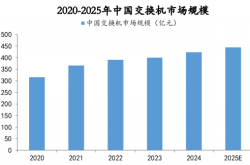17 Million Orders for Driverless Vehicles, Leading the World! Baidu Apollo Go's Weekly Orders Exceed 250,000, Closing In on Google's Waymo! The Intensifying Sino-US Rivalry in Autonomous Driving
![]() 11/04 2025
11/04 2025
![]() 524
524
Introduction
The Sino-US competition in the autonomous driving arena has reached a critical juncture.
According to Baidu's latest figures, Apollo Go's driverless service has amassed 17 million orders, with weekly fully autonomous ride orders surpassing 250,000—a volume on par with the weekly paid ride numbers announced by U.S. leader Waymo in late April this year.
Behind this numerical parity lies years of relentless effort by Chinese companies to commercialize autonomous driving technology.
From lab-based technology to large-scale operations, and from testing in restricted areas to full-scene commercialization, Baidu and Waymo have each charted distinct development paths.
Let's delve into this topic with everyone at the WeChat Official Account: Self-Driving Car Insights!
I. The Acceleration of Commercialization Behind Order Parity
Baidu Apollo Go's milestone of 250,000 weekly orders was not achieved overnight.
Based on CNBC's calculations using Baidu's quarterly data as of June 30, the average weekly orders at that time were approximately 170,000. This indicates that Baidu has boosted its weekly order volume by nearly 50% in just a few months, showcasing robust growth momentum.
Behind this achievement lies Baidu's continuously expanding operational reach.
Apollo Go not only operates in domestic cities such as Wuhan, Beijing, Shanghai, and Shenzhen but has also extended its services to Hong Kong, Dubai, Abu Dhabi, and Switzerland, forming the embryonic structure of a global layout.
Its cumulative statistics are even more impressive:
As of now, Apollo Go has received 17 million orders, with vehicles traveling a cumulative distance of 240 million kilometers and completing 140 million autonomous rides.
These figures paint a picture of the vast scale of Baidu's autonomous driving business.
In contrast, Waymo, the U.S. leader in autonomous driving, announced on June 9, 2025, that it had completed a cumulative 11 million trips through its autonomous driving service.
Waymo primarily operates in San Francisco, Los Angeles, and Phoenix, and has partnered with Uber in Austin and Atlanta.

It's worth noting the differences in operational strategies between the two companies.
Waymo adheres to a "safety-first" philosophy, with its co-CEO Tekedra Mawakana stating, "Safety is our bottom line, and profitability is our goal, but we will not compromise on safety."
This cautious approach has led Waymo to refrain from setting a timeline for profitability.
In contrast, Baidu demonstrates a stronger sense of urgency in commercialization. The company previously announced plans to achieve break-even by the end of 2025 and profitability in 2026.
II. Technical Route Divergence: LiDAR vs. Large Models
In terms of technical path selection, Baidu and Waymo represent two distinct approaches, each with its own merits.
1. Waymo relies on a multi-sensor perception system that combines LiDAR, cameras, and millimeter-wave radar.
Its modified Jaguar i-Pace fleet is equipped with five LiDAR sensors, offering a detection range of up to 300 meters and centimeter-level accuracy.
This system excels in safety but comes with high costs—each LiDAR sensor costs over $10,000.
In 2024, Waymo launched a "Remote Assistance Center" in San Francisco, where human operators can take control within 10 seconds when vehicles encounter extreme scenarios.
This system successfully averted an accident caused by a child suddenly darting into the lane, demonstrating its safety value.
However, the LiDAR scheme also has limitations.
In the first quarter of 2025, Waymo vehicles in Phoenix were forced to suspend services for 48 hours due to sensor failures caused by a sandstorm, highlighting their adaptability issues in extreme weather.
2. Baidu, on the other hand, has opted for an AI large model combined with a front-mounted mass production technical route.
Its seventh-generation autonomous vehicle is equipped with the Apollo ADFM large model, extending its range to 600 kilometers and reducing costs by 30% compared to the previous generation.
In Dubai, Apollo Go collaborated with the local transportation authority to use large models to simulate extreme weather conditions on desert highways, reducing vehicle failure rates to 0.03%.
Baidu's "dynamic boarding and alighting identity authentication" feature, which combines facial recognition and mobile verification, addresses the industry challenge of "passenger identity confirmation" in autonomous vehicles.
However, the "black box" nature of large models also poses challenges. In 2024, during operations in Wuhan, the decision-making logic of Apollo Go's large model was questioned for being "overly conservative," leaving some passengers feeling secure but somewhat constrained.
III. Commercialization Breakthrough: The Life-and-Death Battle from "Burning Money" to "Generating Revenue"
Autonomous driving taxis were once seen as a "bottomless money pit," but now, both Baidu and Waymo are striving to transition from "burning money" to "generating revenue," albeit with different strategies.
1. Waymo's commercialization focuses more on "long-term value."
It does not rush to pursue profitability but instead prioritizes safety and user experience.
For example, in San Francisco, Waymo conducts fine-grained training for road conditions in different areas, even capable of recognizing locally unique scenarios such as "disorganized parking of shared bicycles."
Its collaboration with Starbucks to offer "in-car coffee delivery" services, although temporarily postponed due to California regulations, showcases its ambition to transform autonomous vehicles into "mobile living spaces"—where passengers may one day be able to work, shop, and entertain themselves in the vehicle.
However, this "slow pace" also puts pressure on Waymo, as Alphabet's shareholders are more concerned about when they will see returns.
2. Baidu, on the other hand, excels at "rapid trial and error, rapid monetization."
In addition to regular ride-hailing services, Baidu also exports Apollo Go's technical capabilities:
It provides autonomous driving solutions to traditional automakers and collaborates with urban transportation departments to optimize traffic light timing—in Beijing's Yizhuang, Baidu helped reduce the congestion index by 15% by integrating Apollo Go's real-time traffic data.
More aggressively, Baidu plans to launch an "AI City Steward" in 2026, integrating autonomous driving with intelligent security and environmental monitoring, extending from "transportation services" to "urban operations."
This "technology reuse" model allows Baidu to recover costs more quickly and opens up more possibilities for commercialization.
3. In terms of market expansion, both companies are accelerating their globalization efforts but with different strategies.
Waymo primarily focuses on mature markets in Europe and the Americas, relying on brand reputation for gradual penetration.
Baidu, however, adopts a "difficult-first, easy-later" approach, entering regions with high acceptance of new technologies such as Dubai and Abu Dhabi first, before accumulating experience to expand into European and American markets.
In Dubai, Baidu Apollo Go has not only adapted to desert heat but also supports Arabic language interaction, capturing 20% of the local ride-hailing market share within six months of launch.
IV. The Future Battle: Not Just Orders, But Ecosystem Competition
As Baidu and Waymo reach the same weekly order volume, the core of this competition has shifted from "who has more orders" to "who can build a stronger ecosystem."
Because the ultimate value of autonomous driving taxis lies not just in replacing human drivers but in reconstructing the entire transportation and even urban ecosystem.
1. Waymo, backed by Alphabet, is integrating resources from Google Maps and Google Cloud:
Users booking rides through Google Maps will receive priority recommendations for Waymo.
Waymo's driving data, in turn, optimizes Google Maps' traffic prediction.
Google Cloud provides computational support for Waymo, reducing model training costs.
This "ecosystem synergy" allows Waymo to deeply integrate transportation services with users' daily lives but also faces regulatory pressure—the EU is currently reviewing Waymo's bundling behavior with Google Maps, concerned about potential monopolies.
2. Baidu's ecosystem layout is more "practical."
It opens up Apollo Go's technology to domestic automakers, such as collaborating with BAIC Arcfox to develop the Alpha S and Alpha T series models.
Meanwhile, Baidu Intelligent Cloud provides autonomous driving solutions for industries like logistics and sanitation, extending the use of autonomous vehicles from "passenger transport" to "cargo transport" and "operations."
In Beijing, Baidu even integrates autonomous vehicles with community group buying, allowing users to place orders and have fresh produce delivered directly to their doorstep by autonomous vehicles, achieving a closed loop for the "last 100 meters."
3. This Sino-US rivalry in autonomous driving has no absolute winner, as the ultimate beneficiary will be society as a whole.
When Baidu's autonomous vehicles can navigate through Wuhan's old alleys with agility, and Waymo's vehicles can safely operate in San Francisco's heavy rain, we witness not just technological progress but a revolution in transportation.
Perhaps soon, "hailing a cab" will become a thing of the past, and "ordering via smartphone, picked up by an autonomous vehicle" will become routine. As Baidu and Waymo compete, they will continue to create new possibilities in driving this revolution forward.
Next, Baidu will hold its annual technology conference on November 13 and release its quarterly financial report on November 18, potentially announcing more new plans for Apollo Go.
Although Waymo has not disclosed its latest developments, industry insiders speculate it may expand into new U.S. cities by the end of the year. This "autonomous racing" across the Pacific will only become more exciting.
In conclusion, Self-Driving Car Insights (WeChat Official Account: Self-Driving Car Insights) believes:
The Sino-US competition in autonomous driving has entered a new phase, and Baidu's order parity is just the beginning. With Tesla's Cybercab joining the fray at a manufacturing cost of 210,000 yuan and rapid growth from Chinese startups like Pony.ai and WeRide, competition in this sector will become even more intense.
When Baidu's autonomous vehicles can recognize various global dialects for "pull over" commands, and Waymo learns to pick up inebriated passengers in the rain, consumers will be the biggest winners.
What do you think, dear readers?
#SelfDrivingCarInsights #Driverless #AutonomousDriving #SelfDrivingVehicles








